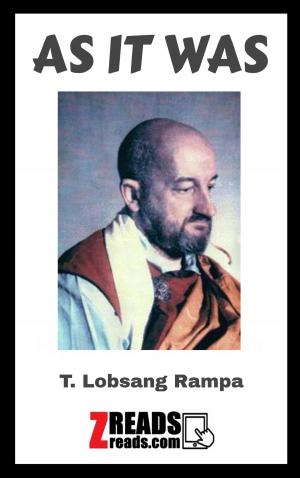THE MACHINERY OF THE MIND
Nonfiction, Religion & Spirituality, Occult, Parapsychology, Occultism, New Age| Author: | Dion Fortune, James M. Brand | ISBN: | 1230003125762 |
| Publisher: | ZREADS | Publication: | March 9, 2019 |
| Imprint: | Language: | English |
| Author: | Dion Fortune, James M. Brand |
| ISBN: | 1230003125762 |
| Publisher: | ZREADS |
| Publication: | March 9, 2019 |
| Imprint: | |
| Language: | English |
THE MACHINERY OF THE MIND
By Dion Fortune
Synopsis
Chapters include: The Physical Vehicle Of Consciousness; The Evolution Of The Nervous System; How An Idea Enters The Mind; The Organisation Of The Upper Levels Of The Mind; The Organization Of The Lower Levels Of The Mind; Complexes; The Instincts; The Self-Preservation Instinct; Diseases Of The Self-Preservation Instinct; The Reproductive Instinct; Development Of The Reproductive Instinct; Diseases Of The Reproductive Instinct; Sublimation; Maladaptation To Environment And Psychopathology, and more.
Excerpt:
In order to arrive at an adequate understanding of mental processes it is necessary to have some idea of the machinery whereby the mind makes contact with the body.
Throughout every inch of our organism is a network of specialised fibres whose function it is to carry nervous impulses from the sense organs to the central nervous system of brain and spinal cord, and from thence out again to the muscles, glands, and other organs of reaction. The sense organs act as receivers of sensation, the nerve fibres as transmitters, the central nervous system as a general telephone exchange, and the muscles, glands and organs as the executers of the impulses of the mind.
Sense organs consist of cells, or sets of cells, specialised for the reception of particular kinds of impressions. That is to say, if the particular kind of stimulus they are fitted to receive is administered to them, a change, probably of a chemical type, takes place in their substance, which, it is thought, gives rise to energy of an electrical nature, which runs along the nerve fibre as along a wire. At the present moment, however, our knowledge of the nature of the nervous impulse is tentative and hypothetical.
Like all other living tissue, the nervous system is built up of millions of specialised cells. These cells consist of a main cell body with prolongations, usually two in number. One of these has a mass of branching fibres like the root of a plant, and is called the DENDRITE. The other consists of a long thread, the end of which is frayed out into strands as the end of a piece of worsted may be unravelled. This process is called the AXON.
The thread-like branches of the axon of one cell interlace with these of the dendrite of another cell and a nervous impulse, running down the nerve fibres, jumps the gap in the same way as the electric current jumps the space between the terminals of an arc lamp.
It will readily be seen that these interlacing fibrils, millions in number, ramifying throughout every portion of the body, form a most wonderful system of communication; the brain and spinal cord acting as a central telephone exchange.
Muscles are composed of long, spindle-shaped cells which are capable of contraction. Chemical changes are constantly going on in their substance. The blood and lymph which bathe them bring food materials and carry away the waste products of their activity.
These food substances, which are highly organised chemical compounds, are stored in the body of the cell. When a nervous impulse is received, these food globules, as it were, explode; that is to say, they break down into their component chemical parts, and the energy which went to build them up is set free in the process and performs the work for which the muscle is designed.
The glands are the chemists of the body, and in the crucibles of their minute cells carry out the living chemistry upon which our vital functions are based. The glands are the regulator of every process of the body.
File information:
File size (Digital (181KB)
Books (1)
Biography included (Yes)
Page count (8.5x11) (62)
Word count(17,754)
Font size (12pt)
Working table of contents (Yes)
Originally published (1922)
Republished (2019)
THE MACHINERY OF THE MIND
By Dion Fortune
Synopsis
Chapters include: The Physical Vehicle Of Consciousness; The Evolution Of The Nervous System; How An Idea Enters The Mind; The Organisation Of The Upper Levels Of The Mind; The Organization Of The Lower Levels Of The Mind; Complexes; The Instincts; The Self-Preservation Instinct; Diseases Of The Self-Preservation Instinct; The Reproductive Instinct; Development Of The Reproductive Instinct; Diseases Of The Reproductive Instinct; Sublimation; Maladaptation To Environment And Psychopathology, and more.
Excerpt:
In order to arrive at an adequate understanding of mental processes it is necessary to have some idea of the machinery whereby the mind makes contact with the body.
Throughout every inch of our organism is a network of specialised fibres whose function it is to carry nervous impulses from the sense organs to the central nervous system of brain and spinal cord, and from thence out again to the muscles, glands, and other organs of reaction. The sense organs act as receivers of sensation, the nerve fibres as transmitters, the central nervous system as a general telephone exchange, and the muscles, glands and organs as the executers of the impulses of the mind.
Sense organs consist of cells, or sets of cells, specialised for the reception of particular kinds of impressions. That is to say, if the particular kind of stimulus they are fitted to receive is administered to them, a change, probably of a chemical type, takes place in their substance, which, it is thought, gives rise to energy of an electrical nature, which runs along the nerve fibre as along a wire. At the present moment, however, our knowledge of the nature of the nervous impulse is tentative and hypothetical.
Like all other living tissue, the nervous system is built up of millions of specialised cells. These cells consist of a main cell body with prolongations, usually two in number. One of these has a mass of branching fibres like the root of a plant, and is called the DENDRITE. The other consists of a long thread, the end of which is frayed out into strands as the end of a piece of worsted may be unravelled. This process is called the AXON.
The thread-like branches of the axon of one cell interlace with these of the dendrite of another cell and a nervous impulse, running down the nerve fibres, jumps the gap in the same way as the electric current jumps the space between the terminals of an arc lamp.
It will readily be seen that these interlacing fibrils, millions in number, ramifying throughout every portion of the body, form a most wonderful system of communication; the brain and spinal cord acting as a central telephone exchange.
Muscles are composed of long, spindle-shaped cells which are capable of contraction. Chemical changes are constantly going on in their substance. The blood and lymph which bathe them bring food materials and carry away the waste products of their activity.
These food substances, which are highly organised chemical compounds, are stored in the body of the cell. When a nervous impulse is received, these food globules, as it were, explode; that is to say, they break down into their component chemical parts, and the energy which went to build them up is set free in the process and performs the work for which the muscle is designed.
The glands are the chemists of the body, and in the crucibles of their minute cells carry out the living chemistry upon which our vital functions are based. The glands are the regulator of every process of the body.
File information:
File size (Digital (181KB)
Books (1)
Biography included (Yes)
Page count (8.5x11) (62)
Word count(17,754)
Font size (12pt)
Working table of contents (Yes)
Originally published (1922)
Republished (2019)















